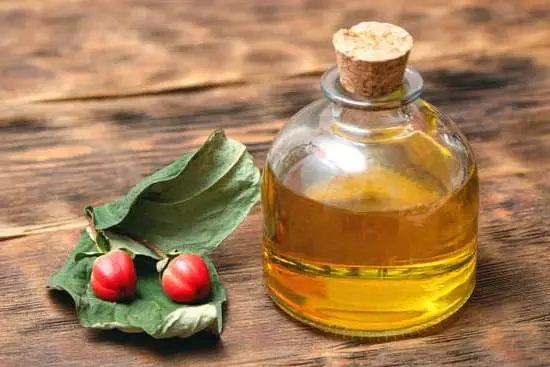Are you looking to indulge in the world of massage therapy but not sure where to start? Understanding the differences between Swedish and aromatherapy massage can help you make an informed decision about which therapy is right for you. Both types of massages offer unique benefits and techniques, and it’s important to know the distinctions before booking your next session.
Massage therapy has been used for centuries to promote relaxation, alleviate muscle tension, and improve overall well-being. With numerous styles and techniques available, it can be overwhelming to choose the right one for your needs. Two popular forms of massage therapy, Swedish and aromatherapy massage, each offer distinct advantages that cater to different preferences and health goals.
Swedish massage has a rich history dating back to the 19th century and emphasizes long, flowing strokes along with kneading and friction techniques. On the other hand, aromatherapy massage incorporates essential oils into the massage experience to enhance physical and emotional benefits. By understanding the key differences between these two forms of massage therapy, you can make an informed decision on which one will best suit your needs.
History and Origin of Swedish Massage
The history and origin of Swedish massage can be traced back to the 19th century when a Swedish fencing instructor named Per Henrik Ling developed a series of movements known as the “Swedish Movement System.” This system incorporated massage techniques that are still widely used today. It wasn’t until the 1850s, however, that Dutch practitioner Johan Georg Mezger adopted these techniques and coined the term “Swedish massage” to define the basic strokes used in the therapy.
The key principles of Swedish massage involve long, gliding strokes, kneading of individual muscles, friction, tapping or percussion, and vibration. These techniques are designed to improve blood circulation and promote relaxation while easing muscle tension. Oftentimes, unscented oil or lotion is used to reduce friction on the skin.
Many people seek out Swedish massage for its numerous benefits, including overall relaxation, stress reduction, improved circulation, relief from muscle tension, and increased flexibility. It is particularly well-suited for individuals who want a gentle form of massage to promote relaxation and relieve muscle tension without delving into deeper pressure techniques.
One notable difference between Swedish massage and aromatherapy massage is the use of essential oils. While Swedish massage typically uses unscented oil or lotion for its strokes and techniques, aromatherapy massage incorporates specific essential oils tailored to address various concerns such as stress relief, emotional well-being, and physical ailments. This fundamental variance sets them apart in terms of both technique and therapeutic benefits.
| Key Principle | Swedish Massage | Aromatherapy Massage |
|---|---|---|
| Use of Essential Oils | No | Yes |
| Main Focus | Relaxation and Muscle Tension Relief | Emotional Well-being through Aromas |
Key Principles and Techniques of Swedish Massage
Swedish massage, also known as classic massage, is one of the most popular and widely practiced forms of massage therapy. It was developed in the 19th century by a Swedish fencing instructor named Per Henrik Ling.
The key principles of Swedish massage include using long, gliding strokes, kneading, tapping, and deep circular movements to promote relaxation and ease muscle tension. The primary goal of Swedish massage is to increase the flow of oxygen in the blood and release toxins from the muscles.
One of the main differences between Swedish and Aromatherapy massage is that Swedish massage focuses on the physical aspect of relaxation through techniques such as kneading and tapping, while Aromatherapy massage incorporates essential oils to enhance both physical and emotional well-being. In addition to using various hand techniques, Swedish massage also includes joint movement and stretching. It is typically performed on a massage table with the client undressed and covered by a sheet.
Another key principle of Swedish massage is its ability to improve circulation and flexibility while reducing stress and tension. This form of massage is commonly used for relaxation but can also be beneficial for treating specific musculoskeletal issues such as chronic pain or sports injuries. Swedish massage therapists are trained to assess each client’s needs and adjust their techniques accordingly to provide a customized experience.
| Key Principles of Swedish Massage | Differences Between Swedish and Aromatherapy Massage |
|---|---|
| Promotes relaxation and eases muscle tension | Focuses on physical aspect of relaxation with hand techniques |
| Improves circulation and flexibility | Incorporates essential oils for emotional well-being |
| Customized experience based on client’s needs | Involves joint movements and stretching |
Benefits of Swedish Massage for Relaxation and Pain Relief
Swedish massage is a popular and widely practiced form of massage therapy that focuses on relaxation and pain relief. This technique has been used for centuries and has proven to be effective in promoting overall well-being. The primary goal of Swedish massage is to relax the entire body by rubbing the muscles in long, gliding strokes in the direction of blood returning to the heart.
Relaxation
One of the main benefits of Swedish massage is its ability to promote relaxation. The gentle, flowing strokes help to calm the nervous system and reduce stress levels. This can lead to improved mood, better sleep quality, and an overall sense of well-being. Many people turn to Swedish massage as a way to unwind and de-stress from their busy lives.
Pain Relief
In addition to its relaxation benefits, Swedish massage also provides relief from muscle tension and pain. The use of kneading, tapping, and circular movements can help release tight knots or adhesions within the muscles. This can significantly reduce discomfort caused by conditions such as fibromyalgia, arthritis, or muscle strains. Overall, Swedish massage promotes better circulation, which aids in the healing process for sore or injured muscles.
Given these inherent benefits, it’s no wonder that Swedish massage remains a popular choice for those seeking therapeutic touch. However, it’s important to note that there are distinct differences between Swedish and aromatherapy massages that may influence your choice depending on your specific needs. Understanding these differences will help you make an informed decision about which type of massage therapy best suits your requirements.
History and Origin of Aromatherapy Massage
Aromatherapy massage has been practiced for centuries and has its origins in ancient civilizations such as Egypt, China, and India. The use of aromatic oils and natural plant extracts for medicinal and therapeutic purposes can be traced back to these early cultures. However, the term “aromatherapy” was coined in the 20th century by a French chemist named René-Maurice Gattefossé.
The history of aromatherapy massage is deeply intertwined with the use of essential oils, which are highly concentrated plant extracts that have been used for their healing properties for thousands of years. In ancient times, these oils were prized for their ability to promote relaxation, alleviate pain, and improve overall well-being. Today, aromatherapy massage continues to be a popular form of holistic therapy that combines the benefits of touch with the therapeutic properties of essential oils.
The practice of aromatherapy massage has evolved over time, with different cultures contributing to its development and refinement. From Ancient Egypt to modern-day spas around the world, aromatherapy massage has endured as a powerful healing modality that addresses both physical and emotional health. Its rich history and effectiveness in promoting relaxation and emotional well-being make it a popular choice for those seeking natural ways to improve their quality of life.
- Origins in ancient civilizations such as Egypt, China, and India
- Coined in the 20th century by French chemist René-Maurice Gattefossé
- Use of essential oils for medicinal and therapeutic purposes
Essential Oils and Their Role in Aromatherapy Massage
Aromatherapy massage, often referred to simply as aromatherapy, is a form of alternative medicine that involves the use of essential oils for therapeutic benefits. The concept of aromatherapy dates back thousands of years, with ancient civilizations like the Egyptians, Greeks, and Romans all using aromatic oils for medicinal and healing purposes.
In aromatherapy massage, essential oils are extracted from plants and then applied to the skin through massage. The oils are believed to have various healing properties and can be tailored to address specific symptoms or conditions. For example, lavender oil is commonly used for its calming and relaxing effects, while peppermint oil is often chosen for its invigorating and energizing properties.
The use of essential oils in aromatherapy massage has been linked to a wide range of benefits, including stress reduction, improved mood, relief from muscle tension, and enhanced overall well-being. When combined with the physical manipulation of massage techniques, the aromatic oils can have a powerful effect on both the body and the mind.
The difference between Swedish massage and aromatherapy massage lies primarily in the use of essential oils. While Swedish massage focuses on manipulating muscles through various strokes and kneading techniques to promote relaxation and pain relief, aromatherapy massage incorporates the additional therapeutic benefits of essential oils for a more holistic approach to healing.
The choice between these two types of massages ultimately depends on an individual’s specific needs and preferences when it comes to addressing physical discomfort or emotional well-being.
Benefits of Aromatherapy Massage for Stress Relief and Emotional Well-Being
Aromatherapy massage is a holistic treatment that combines the benefits of essential oils with the therapeutic touch of massage. This combination offers numerous benefits for stress relief and emotional well-being, making it a popular choice for those seeking relaxation and balance in their lives. The use of aromatic essential oils in aromatherapy massage can have a positive impact on both the mind and body, providing a soothing and uplifting experience.
Stress Relief
One of the key benefits of aromatherapy massage is its ability to reduce stress and anxiety. The inhalation of essential oils, combined with the gentle strokes and kneading of the massage, can help calm the nervous system and promote relaxation. Certain essential oils such as lavender, chamomile, and bergamot are known for their stress-relieving properties and are commonly used in aromatherapy massage to help alleviate tension and promote a sense of tranquility.
Emotional Well-Being
In addition to stress relief, aromatherapy massage can also have a positive impact on emotional well-being. The use of essential oils such as rose, ylang-ylang, and geranium can help uplift the mood and promote feelings of happiness and contentment.
These oils are often chosen for their mood-enhancing properties and can be tailored to address specific emotional concerns such as sadness, fatigue, or irritability. Aromatherapy massage provides a nurturing environment that allows individuals to release emotional tension while promoting overall well-being.
Overall Well-Being
The combination of therapeutic touch with the healing properties of essential oils makes aromatherapy massage an effective approach to promoting overall well-being. By addressing both physical discomforts through massage techniques and emotional concerns through the use of essential oils, individuals can experience a more balanced state of being. As a result, aromatherapy massage offers not only physical relaxation but also contributes to mental clarity, emotional stability, and overall wellness.
When considering different types of massages for stress relief and emotional well-being, it is important to understand how each modality approaches these goals differently. The difference between Swedish massage and aromatherapy massage lies in their techniques which ultimately determine their specific benefits for relaxation.
Key Differences Between Swedish and Aromatherapy Massage Techniques
While both Swedish and aromatherapy massages offer relaxation and relief from muscle tension, there are key differences in their techniques and approaches. The main difference lies in the use of essential oils in aromatherapy massage, while Swedish massage focuses on long, flowing strokes without the use of oils.
In a Swedish massage, the therapist uses various techniques such as effleurage (long, gliding strokes), petrissage (kneading movements), and tapotement (rhythmic tapping) to manipulate the soft tissues of the body. The main goal of Swedish massage is to promote relaxation, improve circulation, and relieve muscle tension. This type of massage is often recommended for individuals seeking a traditional therapeutic massage experience without the use of scented oils.
On the other hand, aromatherapy massage incorporates the use of essential oils extracted from plants to enhance the therapeutic effects of the massage. These essential oils are chosen based on their specific properties and benefits, such as lavender for relaxation or peppermint for invigoration. The combination of gentle pressure and aromatic oils in aromatherapy massage aims to not only relax the body but also uplift the mind and spirit.
Another notable difference between Swedish and aromatherapy massages is that while Swedish massage targets physical symptoms such as muscle tension or pain, aromatherapy massage addresses emotional well-being and stress relief through the inhalation and absorption of essential oils. This holistic approach makes aromatherapy massage a popular choice for those seeking a more comprehensive mind-body experience.
In summary, while both types of massages offer numerous benefits for overall wellness, they differ in their techniques and focus. Understanding these key differences can help individuals choose the most suitable massage therapy based on their specific needs and preferences.
Which Massage Therapy Is Right for You? Considerations and Recommendations
When considering which massage therapy is right for you, there are a few important factors to keep in mind. Each type of massage offers different benefits and uses unique techniques, so it’s essential to choose the one that best suits your specific needs and preferences. Here are some key considerations and recommendations to help you decide between Swedish and aromatherapy massage:
1. Reason for Seeking Massage: If you’re looking for a massage primarily for relaxation and relief from muscle tension, Swedish massage may be the better option for you. However, if you’re seeking a more holistic approach that addresses both physical and emotional well-being, aromatherapy massage might be the ideal choice.
2. Sensitivity to Scents: Aromatherapy massage uses essential oils to enhance the overall experience and provide specific therapeutic benefits. If you have any sensitivities or allergies to certain scents, it’s crucial to discuss this with your massage therapist before opting for aromatherapy massage.
3. Desired Outcome: Consider what you hope to achieve from the massage session. Do you want to alleviate muscle pain and improve circulation, or are you aiming to reduce stress levels and promote relaxation? Understanding your desired outcome can help guide your decision between Swedish and aromatherapy massage.
4. Preference for Massage Techniques: The key difference between Swedish and aromatherapy massage lies in their techniques. While Swedish massage focuses on kneading, tapping, and long strokes to relax muscles, aromatherapy massage incorporates both traditional massage techniques along with the use of essential oils for added therapeutic benefits.
Ultimately, the choice between Swedish and aromatherapy massage will depend on your individual needs, goals, and preferences. It’s always recommended to consult with a qualified massage therapist who can provide personalized advice based on your specific situation. By carefully considering these factors, you can make an informed decision about which type of massage therapy is right for you.
Conclusion
In conclusion, both Swedish massage and aromatherapy massage offer unique benefits and techniques that cater to different needs and preferences. Swedish massage is deeply rooted in the principles of anatomy and physiology, focusing on muscle relaxation and pain relief through long, gliding strokes. On the other hand, aromatherapy massage utilizes essential oils to enhance emotional well-being and stress relief while incorporating gentle pressure and specialized techniques.
When choosing the right massage therapy for your needs, it’s essential to consider what you aim to achieve from the treatment. If you’re looking for a more traditional approach to address muscle tension and soreness, Swedish massage may be the ideal choice for you. However, if you’re seeking a holistic experience that targets both physical and emotional well-being, aromatherapy massage could be the perfect option.
Ultimately, whether you opt for Swedish or aromatherapy massage, it’s important to communicate with your therapist about your specific goals and preferences. By discussing your needs openly, you can ensure that the chosen technique aligns with your expectations. Whichever path you choose, both Swedish and aromatherapy massages offer unique benefits that can contribute to overall wellness and relaxation for individuals seeking therapeutic care.
Frequently Asked Questions
Which Is Better Aromatherapy or Swedish Massage?
Aromatherapy and Swedish massage are both beneficial, but it depends on individual preferences. Aromatherapy uses essential oils to enhance relaxation, while Swedish massage focuses on long, flowing strokes and kneading to release tension.
What Is the Difference Between a Normal Massage and an Aromatherapy Massage?
The main difference between a regular massage and an aromatherapy massage is the use of essential oils. Aromatherapy massage incorporates the use of specific scents to enhance relaxation, alleviate stress, and promote overall well-being compared to a regular massage.
What Is Swedish Massage Best For?
Swedish massage is best known for its ability to reduce muscle tension and improve circulation. It is also effective in promoting relaxation and reducing stress. Additionally, Swedish massage can help with chronic pain management and flexibility improvement.

Are you looking for a natural way to improve your health and wellbeing?
If so, aromatherapy may be the answer for you.





